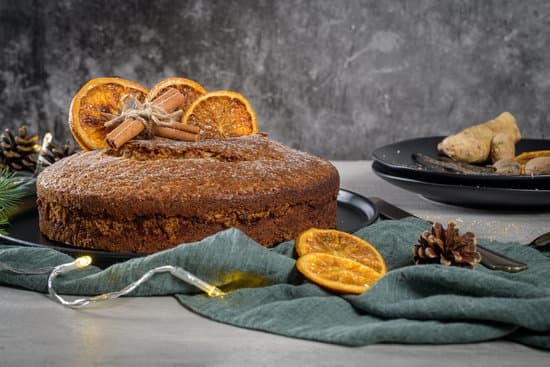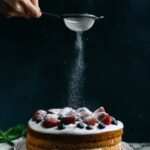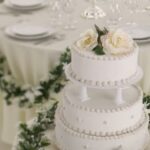What is the best icing for cake decorating? The right icing can make all the difference when it comes to creating beautiful and delicious cakes. From buttercream to royal icing, fondant to ganache, each type of icing has its own unique qualities that can enhance the overall look and taste of a cake. In this article, we will delve into the importance of selecting the perfect icing for cake decorating to achieve professional results.
When it comes to cake decorating, the type of icing you choose can significantly impact the final outcome. Buttercream is known for its creamy texture and versatility, while royal icing offers a smooth and glossy finish. Fondant provides a sleek and polished look, while ganache adds a rich and decadent touch. Understanding the pros and cons of each type of icing is essential in order to make an informed decision when decorating your cakes.
There are several factors to consider when choosing the best icing for cake decorating, such as taste preferences, desired texture, ease of use, and even the climate you are working in. Whether you are frosting cupcakes with buttercream or covering a wedding cake with fondant, selecting the right icing can elevate your creations to new heights. Stay tuned as we explore the different types of icing and provide tips for successfully decorating cakes with them.
Types of Icing
When it comes to cake decorating, choosing the right type of icing is essential to achieving the desired look and taste for your masterpiece. There are several options to consider, each with its own unique qualities and techniques. The most common types of icing used in cake decorating are buttercream, royal icing, fondant, and ganache.
Buttercream is a classic choice for many bakers due to its creamy texture and versatility. It can easily be flavored and colored to suit any theme or occasion. However, buttercream may not hold up well in warmer temperatures and can be prone to melting.
Royal icing is often used for intricate designs on cookies and gingerbread houses due to its ability to harden once dried. It’s made from powdered sugar, egg whites, and lemon juice or cream of tartar. While royal icing is great for detailed decorations, it can be quite firm when dry and may not be as palatable as other options.
Fondant is a popular choice for wedding cakes and special occasion cakes due to its smooth finish and ability to create intricate designs. Fondant can be rolled out into thin sheets that drape over the cake for a flawless look. However, some people find fondant too sweet or dislike its chewy texture.
Ganache, on the other hand, is a luxurious option made from chocolate and cream that creates a shiny finish perfect for drip cakes or truffles. Ganache requires careful temperature control when making it but results in a decadent flavor that pairs well with many cake flavors.
Overall, the best icing for cake decorating depends on several factors such as taste preferences, desired texture, ease of use, and climate conditions where the cake will be displayed. Experimenting with different types of icing recipes and techniques can help you determine which one works best for your specific needs and skill level.
Pros and Cons of Each Type of Icing
When it comes to cake decorating, the type of icing you choose plays a significant role in the overall look and taste of your creation. Each type of icing has its own set of pros and cons, which can greatly influence your decision-making process. Let’s take a closer look at the advantages and disadvantages of popular types of icing: buttercream, royal icing, fondant, and ganache.
Buttercream
One of the most beloved icings for cake decorating, buttercream is known for its creamy texture and delicious flavor. It is versatile and easy to work with, making it perfect for piping borders, flowers, and other intricate designs on cakes. However, buttercream does have its drawbacks – it can be prone to melting in hot climates or under direct sunlight, which may affect the stability of your decorations.
Royal Icing
Royal icing is a smooth and hard-setting icing that is commonly used for decorating cookies, gingerbread houses, and wedding cakes. Its quick-drying nature makes it ideal for creating intricate details like lacework or piped flowers. On the downside, royal icing can be quite tricky to work with as it dries very fast, making it challenging to make adjustments once applied to the cake.
Fondant
Fondant is a popular choice for covering cakes due to its smooth finish and ability to create seamless designs. It provides a clean canvas for intricate decorations and allows for sculpting three-dimensional figures or shapes. However, fondant tends to have a sweeter taste than other types of icing and can sometimes be difficult to work with due to its sticky nature. Additionally, some people find fondant too chewy when eaten with cake.
Each type of icing has its own unique characteristics that cater to different preferences and requirements in cake decorating. By understanding the pros and cons of each type of icing, you can make an informed decision based on what best suits your needs and style as a baker. Ultimately, experimenting with different icings will allow you to discover what works best for your specific projects and taste preferences.
Factors to Consider When Choosing Icing for Cake Decorating
When it comes to cake decorating, selecting the right icing is crucial in achieving a visually stunning and delicious end result. One of the key factors to consider when choosing icing is taste. Buttercream icing is known for its rich and creamy flavor, making it a popular choice for many bakers. On the other hand, royal icing offers a sweet and smooth taste that hardens when dry, perfect for intricate designs on cookies or gingerbread houses.
Texture is another important consideration when choosing icing for cake decoration. Fondant provides a smooth and flawless finish, ideal for creating intricate details on wedding cakes or special occasion cakes. Ganache offers a luxurious and glossy texture that adds an elegant touch to cakes and desserts. Depending on the desired outcome of your cake decorating project, the texture of the icing can make a significant impact.
Ease of use is also a crucial factor to keep in mind when selecting icing for cake decorating. Buttercream is relatively easy to work with and can be piped onto cakes or cupcakes with ease.
On the other hand, fondant requires some skill and practice to achieve a flawless finish but offers versatility in creating unique decorations. Considering your level of experience and comfort with different types of icing can help you choose the best option for your cake decorating needs.
| Factors | Considerations |
|---|---|
| Taste | Buttercream – rich and creamy flavor; Royal Icing – sweet and smooth taste that hardens when dry |
| Texture | Fondant – smooth finish; Ganache – luxurious glossy texture |
| Ease of Use | Buttercream – easy to work with; Fondant – requires skill but offers versatility |
Considering these factors-taste, texture, ease of use-in addition to the climate you will be working in can help determine what type of icing is best suited for your cake decorating project. For example, if you live in a hot and humid climate, using buttercream may not be ideal as it can melt easily. Fondant or ganache might hold up better under such conditions due to their sturdier texture.
Best Icing for Different Types of Cakes
When it comes to cake decorating, choosing the right icing can make all the difference in achieving a professional and visually appealing result. Different types of cakes require different types of icing to not only enhance the appearance but also complement the flavor and texture of the cake. Understanding which icing works best for each type of cake is essential for creating stunning desserts that will impress your guests.
Here is a breakdown of the best icing for different types of cakes:
- Buttercream: Buttercream is a versatile and popular choice for decorating cupcakes. Its creamy texture allows for easy piping and shaping, making it perfect for creating intricate designs on individual cupcakes. The rich buttery flavor of buttercream also pairs well with various cupcake flavors, from classic vanilla to decadent chocolate.
- Fondant: Fondant is commonly used to decorate wedding cakes due to its smooth finish and ability to create intricate designs. While fondant may not have as much flavor as buttercream, it provides a clean canvas for elaborate decorations like sugar flowers, lace patterns, and embossing. Fondant also helps seal in moisture, keeping wedding cakes fresh for longer periods.
- Royal Icing: Royal icing is the go-to choice for decorating cookies, as it hardens into a smooth and glossy finish that is perfect for intricate detailing. Whether you’re flooding sugar cookies with vibrant colors or adding delicate piped designs, royal icing offers precise control over your cookie decorations.
Each type of icing brings its own unique characteristics to the table, so it’s important to consider both aesthetics and practicality when selecting the best icing for your cakes or baked goods. By choosing the right icing based on your specific needs and preferences, you can ensure that your creations not only look stunning but taste delicious as well.
Tips for Successfully Decorating Cakes With Different Types of Icing
Decorating cakes with different types of icing can be a fun and creative process, but it also requires some skill and know-how to achieve professional-looking results. Here are some tips to help you successfully decorate cakes with buttercream, royal icing, fondant, and ganache:
- Buttercream: Buttercream is a versatile icing that is perfect for piping intricate designs or creating smooth finishes on cakes. To successfully decorate a cake with buttercream, make sure the consistency of the icing is just right – not too stiff or too runny. Use a turntable to easily rotate the cake as you pipe decorations, and invest in different piping tips to create various designs.
- Royal Icing: Royal icing is often used for decorating cookies and creating delicate designs on cakes. When working with royal icing, ensure that it is at the right consistency for piping – too thin and it will not hold its shape, too thick and it will be difficult to work with.
Use a piping bag fitted with a small tip for intricate detailing, and allow each layer of icing to dry completely before adding another design on top. - Fondant: Fondant is popular for covering wedding cakes due to its smooth finish and ability to be molded into different shapes. To successfully decorate a cake with fondant, roll out the fondant evenly using powdered sugar to prevent sticking. Smooth the fondant over the cake gently using your hands or a fondant smoother tool, taking care to remove any air bubbles trapped underneath.
- Ganache: Ganache is a rich chocolate frosting that can be used for filling layers or covering cakes in a glossy finish. When working with ganache, ensure that it has cooled to the right temperature before applying it to the cake – too warm and it will slide off, too cold and it will harden quickly. Pour ganache over the cake slowly and use an offset spatula to spread it evenly.
By following these tips and practicing your cake decorating skills with different types of icing, you’ll be able to create beautiful and professional-looking cakes for any occasion. Remember that practice makes perfect, so don’t be afraid to experiment with different techniques and designs until you find what works best for you.
Recipes for Homemade Icing
Making homemade icing for cake decorating can elevate your baked goods to the next level, allowing you to customize flavors and textures to suit your preferences. Whether you prefer a classic buttercream, easy royal icing, or rich chocolate ganache, each type of icing has its own unique characteristics that can enhance the overall look and taste of your cakes. Let’s explore some simple recipes for making these delicious icings at home.
Classic Buttercream
One of the most popular choices for cake decorating, classic buttercream is versatile and easy to work with. To make this icing, you will need butter, powdered sugar, vanilla extract, and a splash of milk. Simply cream the butter until smooth, gradually add in the powdered sugar and vanilla extract until well combined, then thin out the consistency with milk as needed. This creamy and sweet icing is perfect for piping onto cupcakes or spreading onto layer cakes.
Easy Royal Icing
Royal icing is a smooth and glossy icing that hardens when dried, making it ideal for intricate designs like piped flowers or intricate patterns on cookies. To make easy royal icing at home, all you need is egg whites (or meringue powder), powdered sugar, and lemon juice or flavoring of choice.
Beat the egg whites until foamy, gradually add in the powdered sugar and flavoring until stiff peaks form. Adjust the consistency by adding more water to thin it out for flooding or keep it thick for detailed designs.
Chocolate Ganache
For a decadent finish to your cakes or desserts, try using chocolate ganache as an icing. Made with just two ingredients – chocolate and heavy cream – ganache is rich, smooth, and indulgent. Heat the cream until just simmering, then pour it over chopped chocolate and let it sit for a few minutes before stirring until silky smooth.
Ganache can be poured over cakes for a shiny glaze or whipped into a frosting-like consistency for filling or frosting cakes. Its versatility makes it a favorite among bakers for both its taste and ease of use.
Experimenting with different types of homemade icings can help you discover what works best for your baking style and taste preferences. By mastering these basic recipes for classic buttercream, easy royal icing, and chocolate ganache, you can create beautifully decorated cakes that are sure to impress any crowd. So grab your mixing bowls and get ready to whip up some delicious icings for your next baking adventure.
Conclusion
In conclusion, choosing the right icing for cake decorating is essential to achieving professional results in your baked creations. Each type of icing – buttercream, royal icing, fondant, and ganache – has its own pros and cons that must be considered based on factors such as taste, texture, ease of use, and climate. Understanding the best applications for each type of icing is crucial in ensuring that your cakes not only look visually stunning but also taste delicious.
When it comes to selecting the best icing for different types of cakes, it’s important to keep in mind that buttercream works well for cupcakes due to its creamy texture and ability to hold intricate designs. Fondant, on the other hand, is often used for wedding cakes because of its smooth finish and versatility in creating elaborate decorations. Royal icing is ideal for decorating cookies as it hardens quickly to create a polished look.
To successfully decorate cakes with different types of icing, remember to follow specific tips tailored to each kind. Whether you’re working with buttercream swirls or intricate fondant designs, practice makes perfect when it comes to mastering these techniques. Additionally, experimenting with homemade recipes like classic buttercream or chocolate ganache can give you more control over the flavor and consistency of your icing.
Ultimately, by carefully considering all aspects of choosing the best icing for cake decorating – from taste preferences to practicality – you can elevate your baking skills and create stunning confections that will impress any audience. So next time you’re preparing a special treat, remember that the right choice of icing can truly make a difference in achieving professional-looking results.
Frequently Asked Questions
What Is the Best Type of Icing for Cake Decorating?
The best type of icing for cake decorating ultimately depends on personal preference and the specific design you are trying to achieve. Buttercream is a popular choice due to its versatility and ability to hold intricate designs. Royal icing is another option, known for its ability to harden and create a smooth finish.
What Frosting Do Professionals Use?
Professionals often use Swiss meringue buttercream for cake frosting due to its luxurious texture and stability. This type of frosting is made by heating egg whites and sugar before beating in butter, resulting in a silky smooth consistency that holds up well in various decorating techniques.
What Is the Best Icing to Practice Cake Decorating?
For beginners practicing cake decorating, it’s recommended to start with buttercream icing. It is easy to work with, forgiving when mistakes are made, and can be used for various designs such as piping flowers or writing messages on cakes. Additionally, buttercream can be easily colored to add vibrant decorations to your creations.

Welcome to our cake decorating blog! My name is Destiny Flores, and I am the proud owner of a cake decorating business named Cake Karma. Our mission is to provide delicious, beautiful cakes for all occasions. We specialize in creating custom cakes that are tailored specifically to each customer’s individual needs and tastes.





